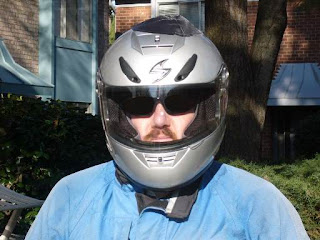Since most of you probably aren't familiar with Deaf culture, let me begin by explaining that the Deaf community is a very touchy (physically) community. I've heard various reasons for this. Part of it seems to be the loss of one sense, sound; so we make it up by using more of another sense, in this case touch. There are lots of hugs, pats, nudges, etc. Another reason for this is that we, of course, can't hear. Say you need to get by John Doe, but he's in your way. A simple "excuse me" won't do much good, it's noisy and his hearing aids are overwhelmed (or he can't hear anything at all). How do you get by? Sometimes it only takes a light tap on the shoulder, sometimes it's a little bit more of a moving of the other person's body (giving a slight push to the side, or putting hands on the shoulder and moving them over a little). Now, all this isn't to say that the Deaf are a community of people constantly groping at each other, not by a long shot. But I've seen that people who aren't comfortable with touching are often unnerved when around a lot of Deaf people. For Deaf folks though, this is the norm.
Now let's add in the Jewish concept of Niddah. Ah, now things become more complex! I see this often with one rabbi I know. He's a Baal Tushvia, a hearing, religious son of deaf, non-religious parents. But he's very active in the deaf community. I sometimes see that he makes a slight move, as if he is about to hug someone, then suddenly remembers and stops himself.
That's the general picture. Now it's on to my own experiences. Before we were married, my wife (modern orthodox her whole life, also deaf) and I really didn't get into a deep discussion on Niddah issues; and after the wedding, sort of fumbled a bit to figure it all out. During the times of Niddah, we still touched to alert each other to things, plus a quick hug hello and good bye, and after a, shall we say, heated discussion, to signal that we are okay again.
But as I began to become more religious myself, we started re-evaluating things, and decided to try and completely keep from touching during this time period. There were some small challenges. For example, I could no longer just tap on her shoulder if I wanted her attention and she didn't have her hearing aids on. Instead, I would now stomp on the floor (for the vibrations), or reach around and wave to her if I was close enough. Those were easily overcome.
No, the place where I noticed it took the most analyzing and adjusting, for me, was the "after heated discussion hug." I came to realize that I was using this as a crutch to calm my wife (and myself) down. Maybe even unfairly. It seemed that if I hugged her tight enough, or long enough, the tears would soon dry up and she'd be feeling better. But now there were times I couldn't give the hug. Now what to do??
I soon learned that when the occasional flare ups would occur (nothing MAJOR, just the usual issues here and there that all married couples with active kids face) that I would need to talk and discuss the issue completely in full length and depth until it was truly resolved for both of us, and we were both feeling better. While this approach takes much longer than the "hug-the-problem-away," I think the solution we come up with is better and longer lasting, not another temporary patch. Now even when it's not a period of Niddah, we do spend more time talking about the issues in detail until they really are resolved, and only then do we close things up with a hug. (After all, they are still nice!)
Tuesday, May 29, 2007
Subscribe to:
Post Comments (Atom)

2 comments:
I also left a comment on Beyond BT, but I wanted to tell you that I don't remember ever reading a better post about nida, and the advantages and postive aspects it has. Well written and genuine. Please keep up the good work.
David
Really excellent and interesting post. Thanks!
Post a Comment